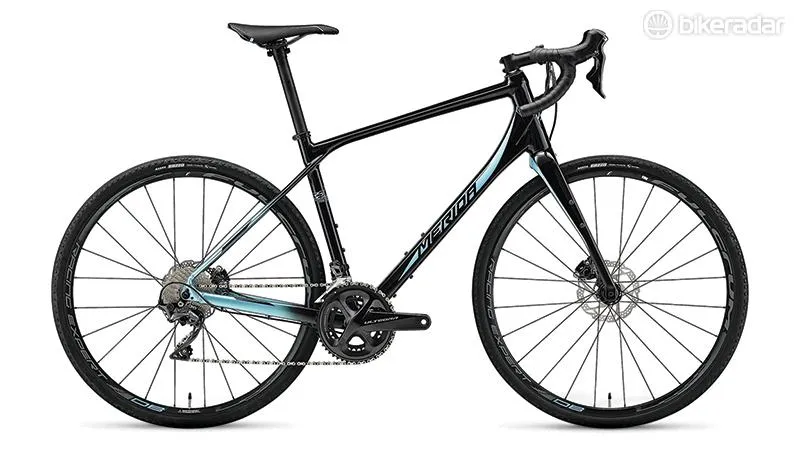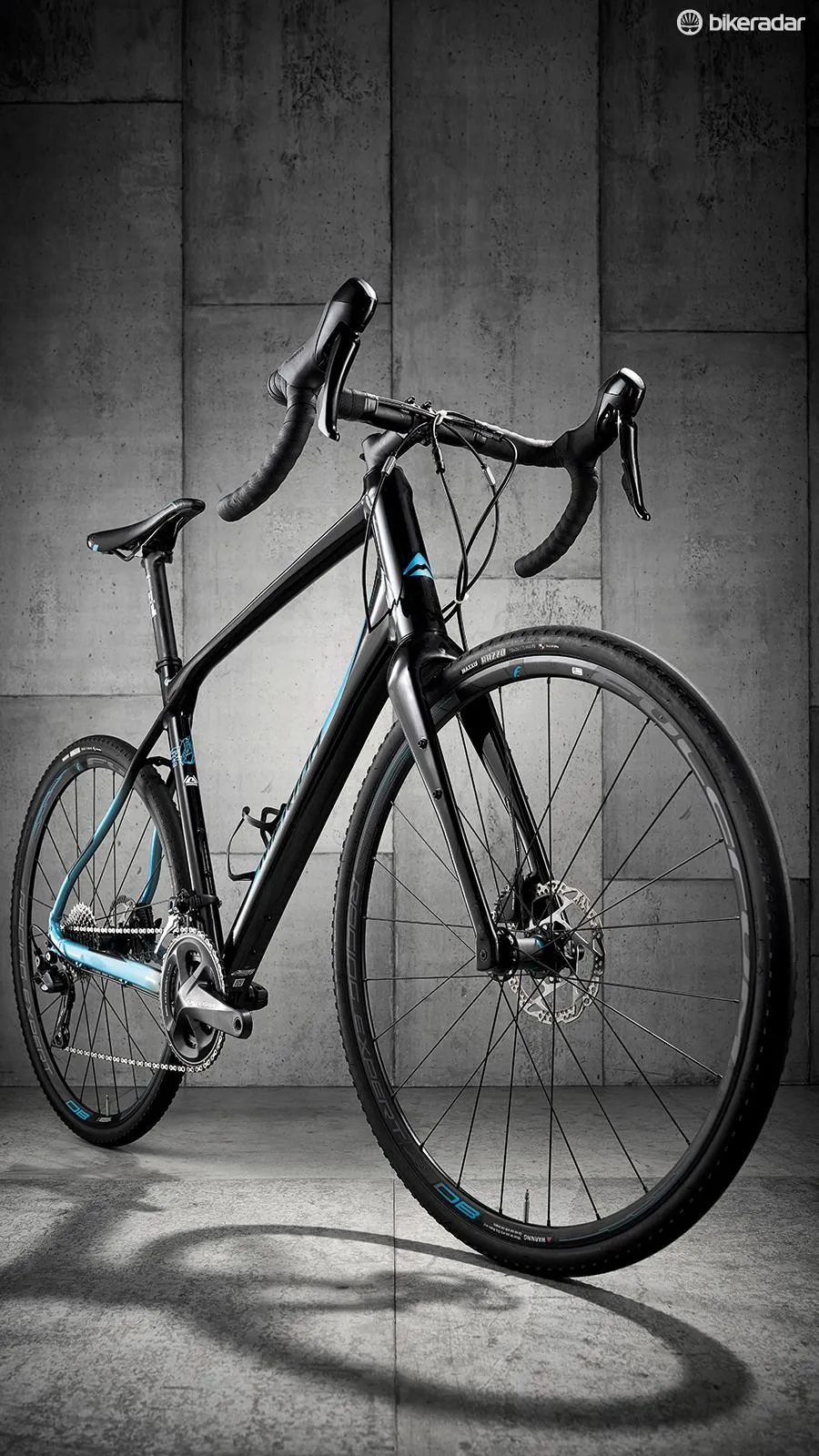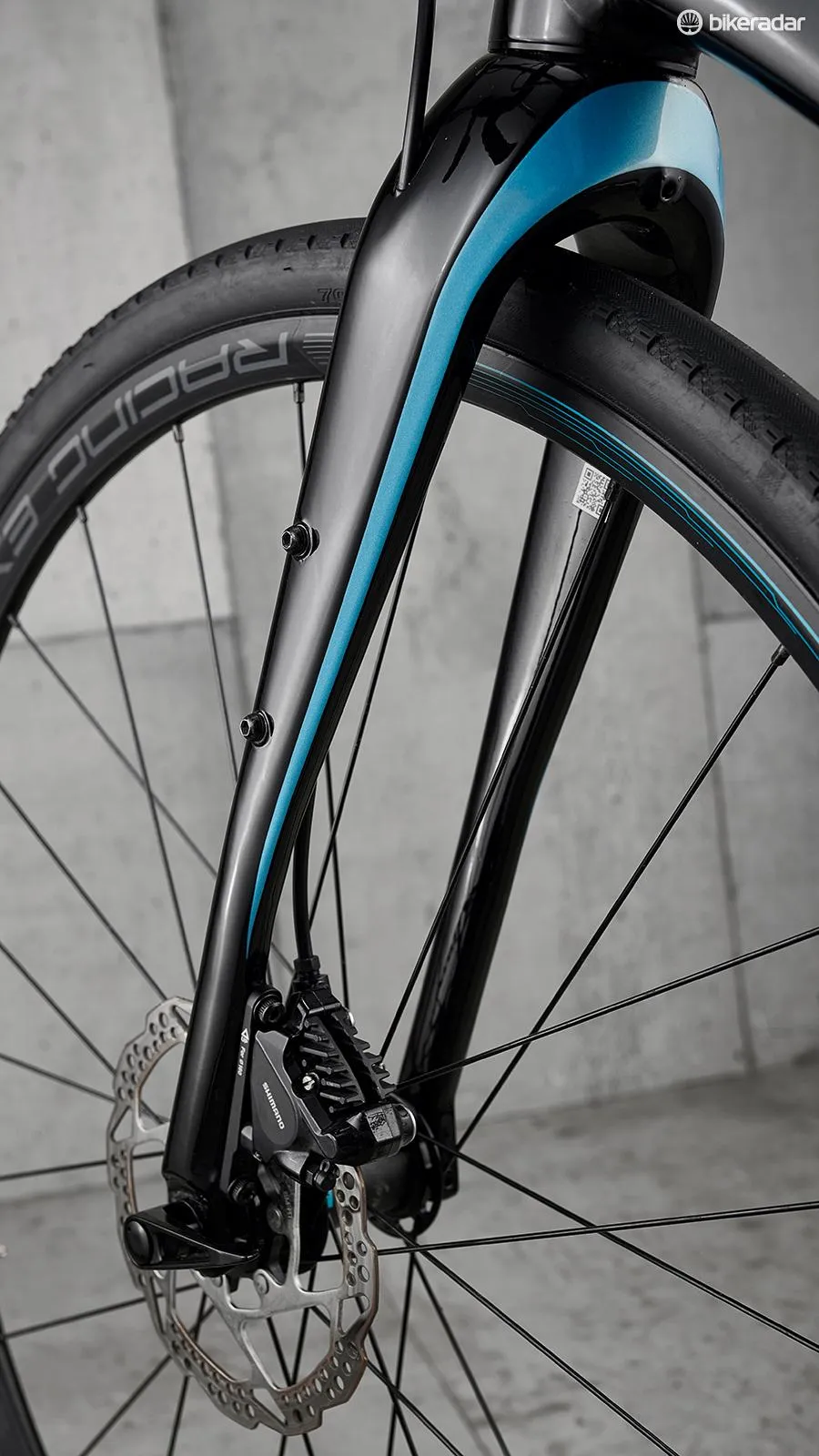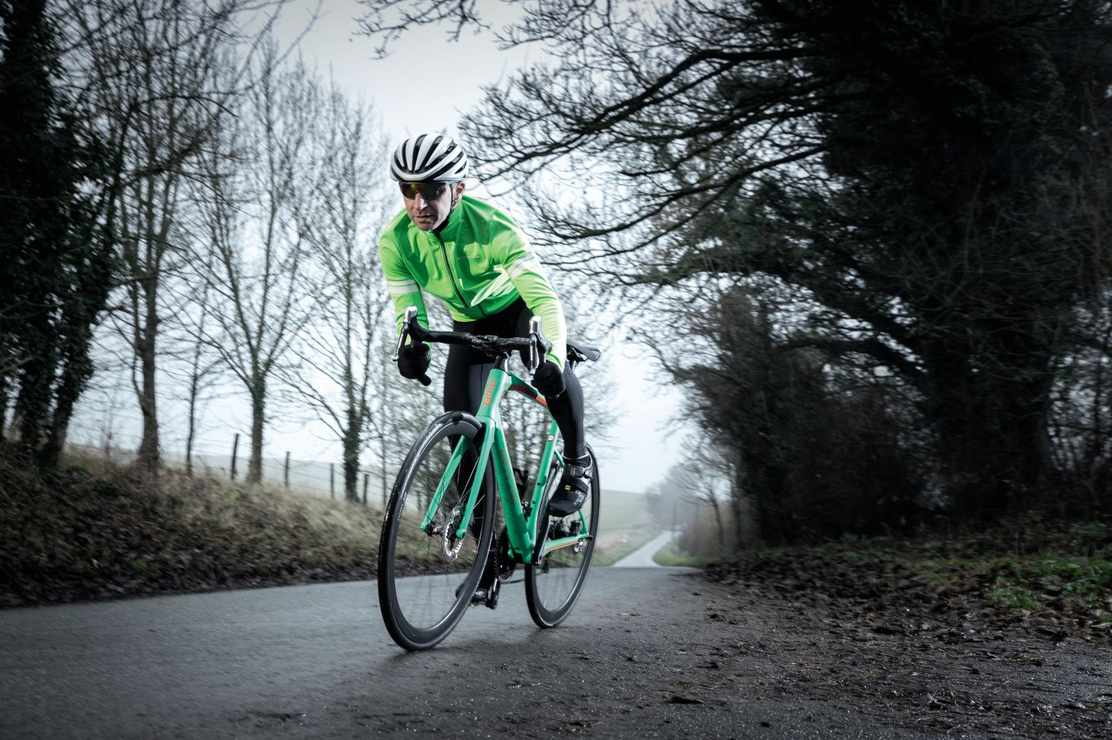Merida’s gravel bike has a bold look, my Large-size bike has a main triangle with a perimeter that is nearer to being a square, and its lengthy down-tube is a stark contrast to the surprisingly short stem.
Merida Silex 700 frame and kit
The 220mm head tube on my aluminium test bike makes for a fairly upright front end, backed up by a steeply sloping top-tube and heavily hydroformed down-tube joined with a flared buttress covering more than half its length.
The top tube has a round-edged diamond profile, while the seatstays and chainstays are hourglass-shaped. The partly flattened seatstays cross over the seat tube to tuck in under the top tube, creating a strong junction, with the dropped stay design and carbon seatpost adding seated comfort.
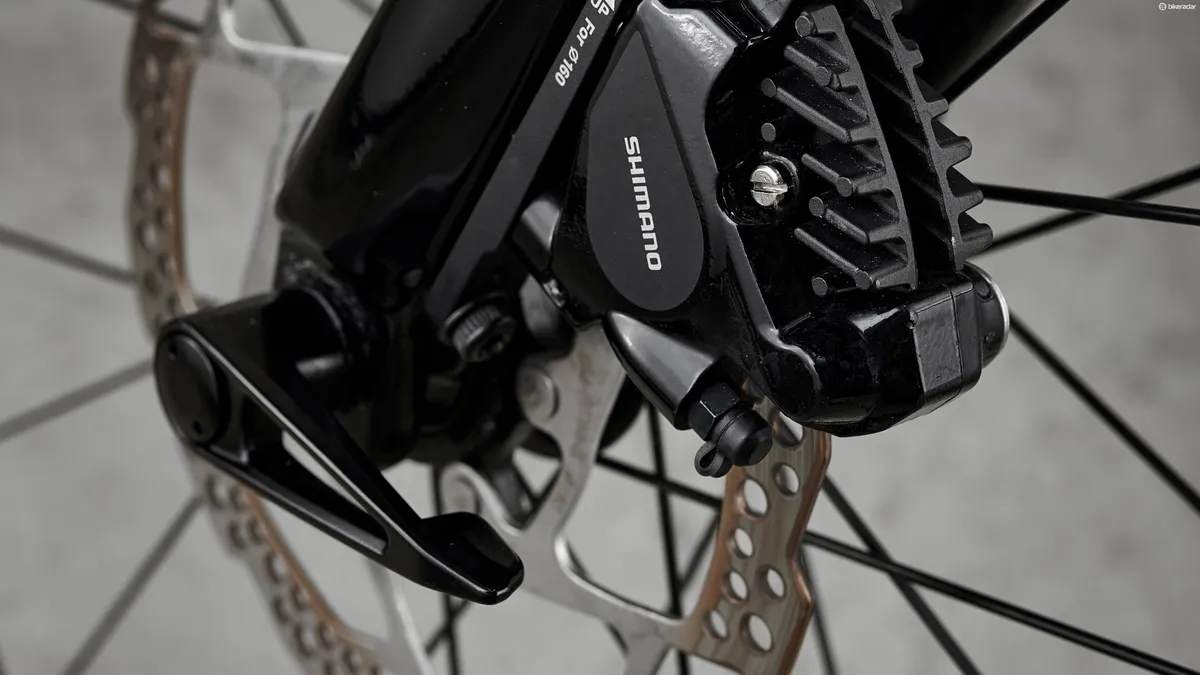
There’s a third bottle mount beneath the down tube, auxilliary luggage/cage-mounts on each fork leg for longer trips, and mudguard fittings for practicality. Merida supplies the bar, stem and seatpost, but leaves the wheels and saddle to the Italians.
From the off, the Fulcrum Racing Expert DB wheelset feels taut and quick, and Prologo’s Scratch saddle is well-shaped, supportive and comfortable.
My usual standard road bike size is 56cm with a similar length top tube (which brought me to this Large frame size) and a handlebar height around 50mm higher than I’d prefer.
As well as the front end’s height, there’s a slack 71-degree head angle and short 80mm stem to consider. But, the Silex has an effective top-tube length of almost 60cm, so reach is reasonable. Add in a steep 74-degree seat angle, and zero setback seatpost, and your positional parameters need tweaking.
Naturally gravitating towards riding in the compact drops much of the time, I was still pondering the geometry as I started a heavily potholed dirt track.
The Maxxis Razzo 35mm semi-slick tyres are totally smooth in the middle, with fine file tread bands on each side and some raised tread blocks on the shoulders. At 50psi, they perform like a quick road tyre on tarmac. I didn’t consider their lack of straight line grip until I’d spent time on the dirt, but I didn’t have any problems unless the surface was really loose.
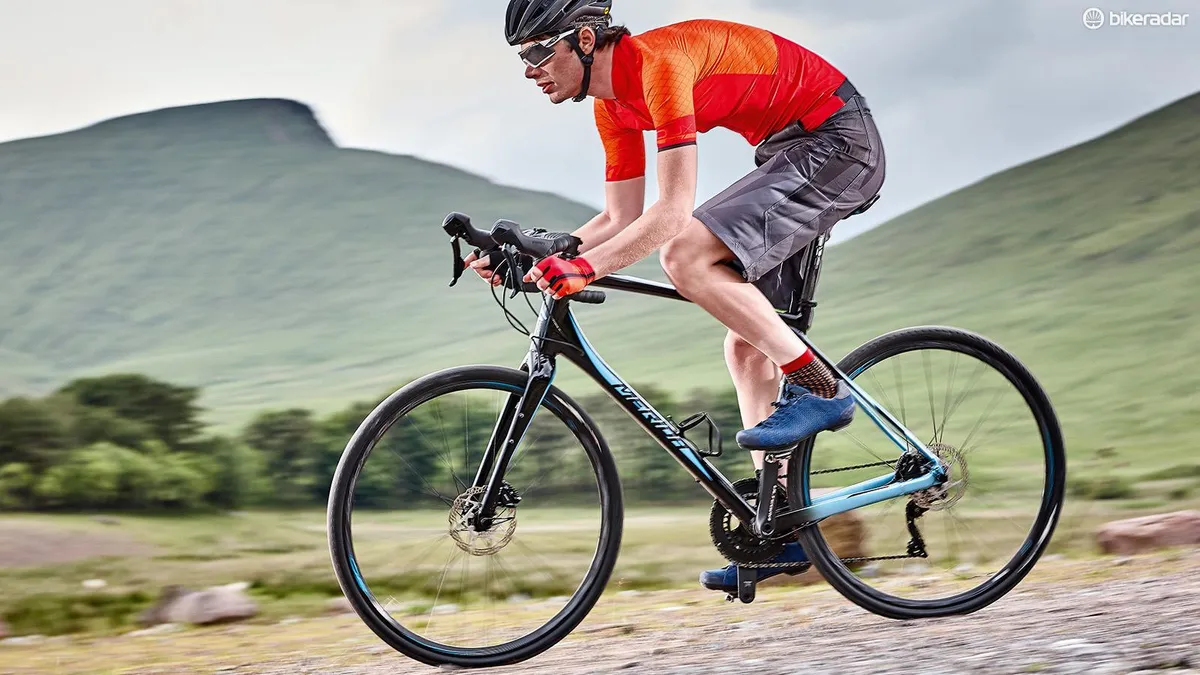
With relatively high tyre-pressures and fairly low air volume, the Merida’s ride comfort was impressive, absorbing general chatter and sucking up bigger hits.
The bike’s willingness to accelerate helps enormously over changeable surfaces, where pace naturally fluctuates, and makes avoiding obstructions less tiring. The wide gearing range was welcome, even though the Silex’s lower mass and lively wheelset meant it didn’t trouble the 34x34 lowest gear. The 50x11 top end came in handy when descending too.
Shimano’s hydraulic discs were very welcome as well, and even though my pre-production model had the 105-level RS505 lever and caliper pairing (rather than the intended Ultegra items), power and control were never in question.
I didn’t feel cramped on the Silex, despite it being a little shorter than usual, and judicious use of the drops hustle it along at an impressive lick.
Its road manners are fine, with no shortage of speed from the wheels and tyres, which carry it over unpaved roads with composure.
